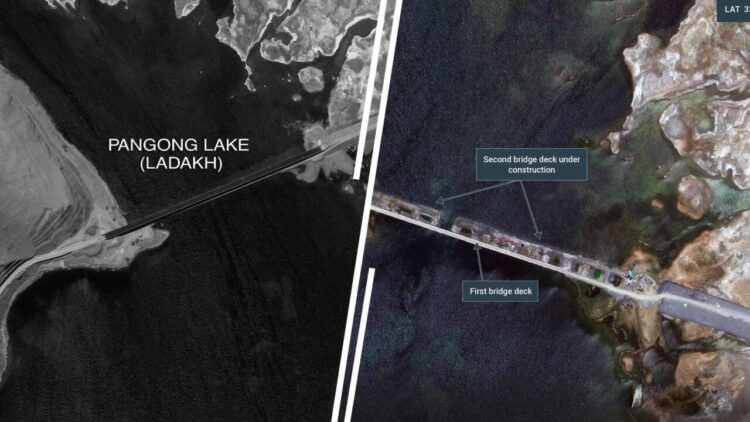China has completed the construction of a 400-meter bridge connecting the northern and southern banks of Pangong Tso. The latest satellite images from July 22, 2024, now show vehicles moving across the black-topped bridge, along with four structures on the northern side of the lake.
The bridge lies in territory held by China since 1958, near the Line of Actual Control in Ladakh. Khurnak Fort, located on the northern shore of Pangong Tso, has been under Chinese control since then. The satellite images accessed by NDTV reveal a Chinese fortification, including two helipads at Khurnak Fort. The fort served as the forward headquarters for Chinese operations in Ladakh during the 1962 India-China war.
Another satellite image shows an existing artillery site and interconnected protected trenches running north to south. Additionally, there is an open defensive position likely housing a Chinese surface-to-air missile launcher, erector, and transporter, as well as an air defense site. A road running parallel to the bank of Pangong Lake facilitates the transport of troops and equipment. The new bridge has significantly reduced travel distance between both banks by 50-100 kilometers, saving several hours in travel time.
In response to these developments, the Indian External Affairs Ministry referred to a previous statement: “This bridge is being constructed in areas that have been under illegal occupation by China for around 60 years now. As you are well aware, India has never accepted such illegal occupation.”
Beginning in May 2020, Indian and Chinese soldiers engaged in a series of violent skirmishes along the Line of Actual Control in Eastern Ladakh. Twenty Indian soldiers were killed in action in the Galwan Valley, north of the Pangong Lake region. China claims four of its soldiers were killed, though investigative reports suggest the true number was closer to 40.
Soldiers from both sides also clashed on the north bank of Pangong Lake. India and China subsequently agreed to reduce tensions by creating a demilitarized zone, resulting in China removing dozens of structures between “Finger 4” and “Finger 8,” geographical markers used to identify parts of the northern bank of Pangong.

















Comments